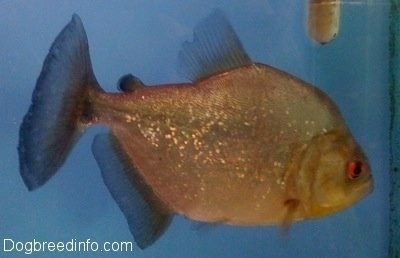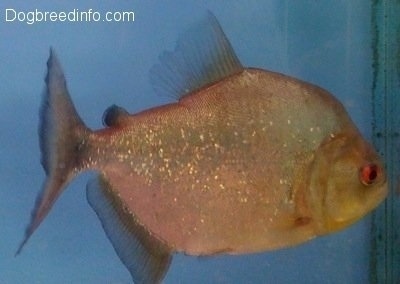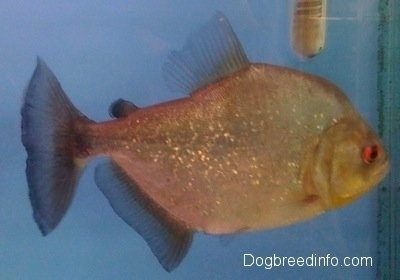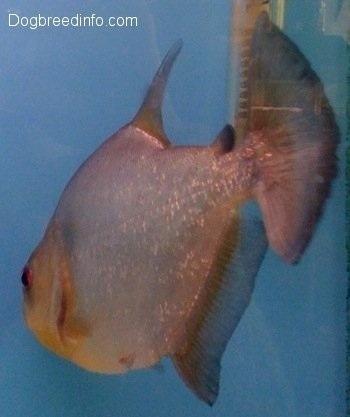
Serrasalmus rhombeus
Characin
Characidae
Serrasalminae
Black Piranha
100 gallons for one specimen
Top, mid, utilizes whole tank.
Difficult
Generally calm. Can be timid at first, especially if juvenile. Temperament does vary for each individual.
Do not keep with other fish. Highly aggressive toward all other fish and other piranha if tank is too small. Unlike other characin species, these fish do not school well unless kept in tanks of 500 gallons and up. Even then, schooling is loose and not consistent.
Unknown
14 inches (40 cm)
Blackwater is highly acceptable. Add driftwood and peat to soften the water and add tannins to make the fish more comfortable. Live plants may be included—piranhas do not usually destroy plants. An Amazon biotope is recommended, as piranhas will feel more comfortable in a natural environment. Echinodorus amazonicus (Amazon sword), Egeria najas/densa (anacharis, elodea), Echinodorus uruguayensis (regular and narrow leaf sword), Heteranthera zosterifolia (Stargrass), as well as most sword plants. If plants are used, a nutrient rich substrate such as Eco-Complete works well as substrate. Otherwise, substrate is immaterial. If live plants are included, lighting must be added carefully, so as not to spook the fish.
Freshwater
6 - 7.0
Soft to medium hard, moderately immaterial.
75° - 82° F (24° - 27° C)
Carnivore. Live food is controversial. Beefheart is generally used. Recipes can be found online. A diet of feeder fish must be complimented with other meaty foods to give a well-balanced diet. Wild specimens feed on small fish, small mammals, lizards, crabs and large beetles.
Difficult, if impossible.
Difficult, if impossible. Breeding often results in cannibalism.
South America, Amazon basin, Guyana
Illegal in California, possibly in other states. Any fish that is considered to be a very dangerous species if let loose in the wild is blanket-banned in Europe. Check with your local government before buying any fish not commonly found in fish stores.



